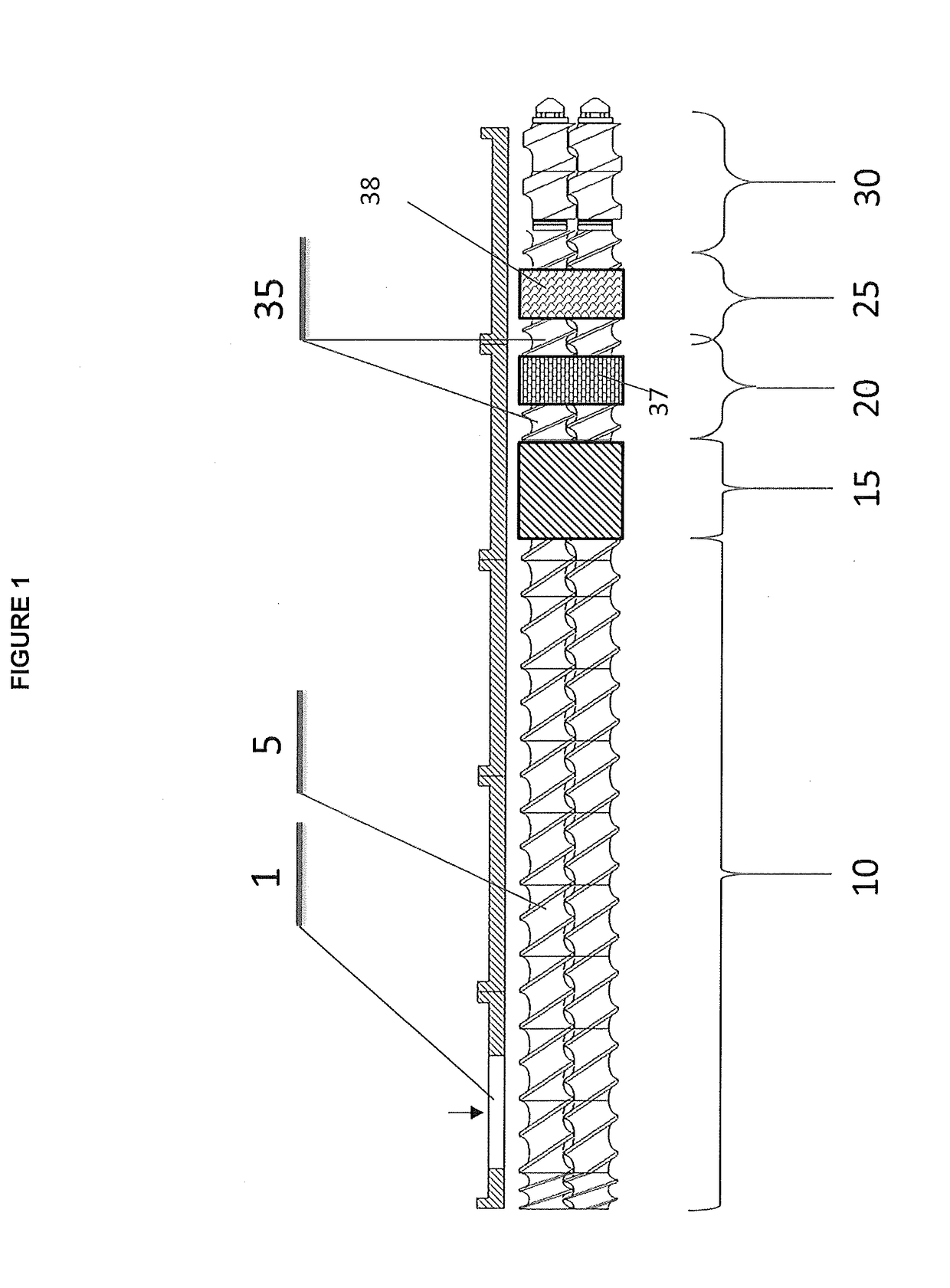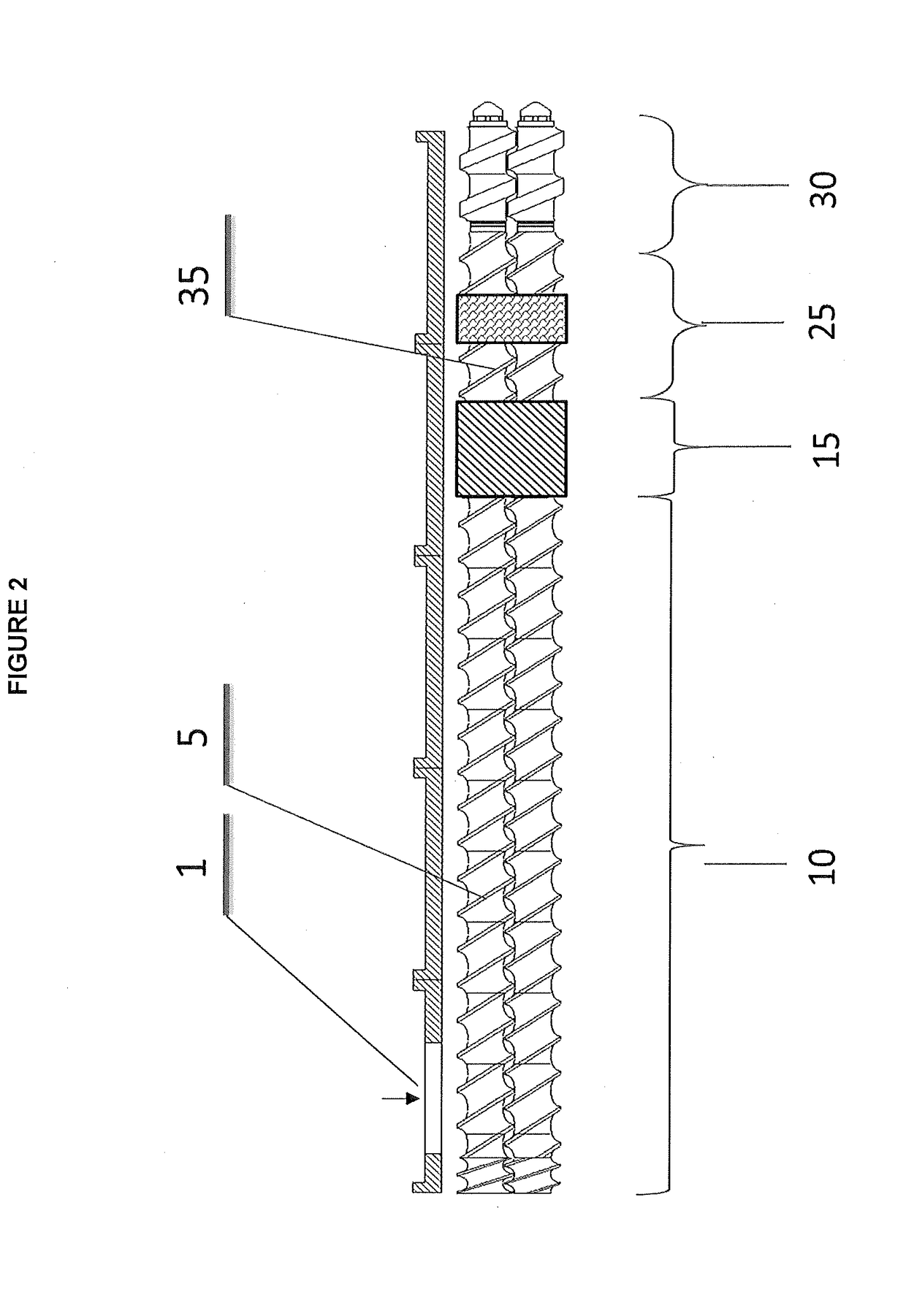Extrusion process for polyethylene polymers
a polyethylene polymer and extrusion process technology, applied in the field of polymer extrusion method, can solve the problems of affecting the quality of polyethylene polymers, and reducing the throughput of polyethylene polymers to unacceptable levels, so as to reduce the number of gels presen
- Summary
- Abstract
- Description
- Claims
- Application Information
AI Technical Summary
Benefits of technology
Problems solved by technology
Method used
Image
Examples
examples
[0150]Melt index, I2, in g / 10 min was determined on a Tinius Olsen Plastomer (Model MP993) in accordance with ASTM D1238 Procedure A (Manual Operation) at 190° C. with a 2.16 kilogram weight. High load melt index, I21, in g / 10 min was determined in accordance with ASTM D1238 Procedure A at 190° C. with a 21.6 kilogram weight. Melt flow ratio (also sometimes called melt index ratio) is 121 / 12.
[0151]Polymer density was determined in grams per cubic centimeter (g / cc) according to ASTM D792.
[0152]Polymer molecular weight information such as Mw, Mn and Mz (in g / mol) and molecular weight distribution (Mw / Mn), z-average molecular weight distribution (Mz / Mw) and modality (e.g. unimodal, bimodal or multimodal, broad or narrow chromatograph profile) can be obtained by gel permeation chromatography (GPC), using an instrument sold under the trade name “Waters 150c”, with 1,2,4-trichlorobenzene as the mobile phase at 140° C. Samples can be prepared by dissolving the polymer in 1,2,4-trichloroben...
PUM
| Property | Measurement | Unit |
|---|---|---|
| Weight | aaaaa | aaaaa |
| Fraction | aaaaa | aaaaa |
| Fraction | aaaaa | aaaaa |
Abstract
Description
Claims
Application Information
 Login to View More
Login to View More - R&D
- Intellectual Property
- Life Sciences
- Materials
- Tech Scout
- Unparalleled Data Quality
- Higher Quality Content
- 60% Fewer Hallucinations
Browse by: Latest US Patents, China's latest patents, Technical Efficacy Thesaurus, Application Domain, Technology Topic, Popular Technical Reports.
© 2025 PatSnap. All rights reserved.Legal|Privacy policy|Modern Slavery Act Transparency Statement|Sitemap|About US| Contact US: help@patsnap.com



